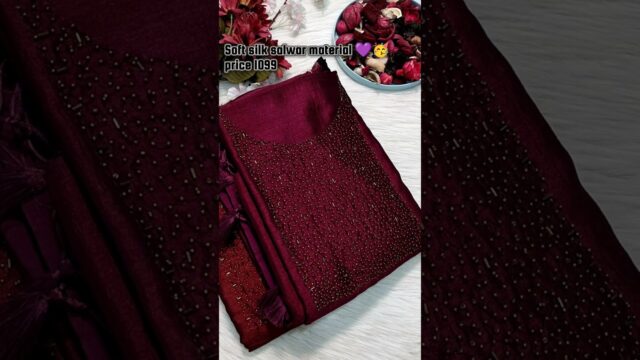Tips for stitching lace into clothes
193KHey there! Welcome to my video where I’ll be sharing some valuable tips for stitching lace into clothes. Lace is a beautiful and delicate fabric that can add a touch of elegance and femininity to any garment. However, stitching lace can be a bit tricky as it requires precision and attention to detail. But fear not, with the right techniques and tools, you can achieve perfect results every time. So let’s dive in and learn how to stitch lace like a pro!
First and foremost, it’s important to choose the right type of lace for your project. There are many different types of lace available, such as Chantilly lace, guipure lace, and crochet lace, each with its own unique characteristics and qualities. Make sure to select a lace that suits the style and design of your garment, as well as your sewing skill level. Thicker laces like guipure lace are easier to work with for beginners, while finer laces like Chantilly lace require more precision and attention to detail.
Next, pre-wash your lace fabric before stitching it into your garment. This will help to remove any excess dye and shrinkage from the fabric, ensuring that your finished garment retains its shape and color. Simply soak the lace in lukewarm water with a gentle detergent, then rinse and air dry before proceeding with the stitching process.
When cutting out your lace fabric, use sharp fabric scissors to ensure clean and precise edges. It’s also a good idea to use a rotary cutter and cutting mat for intricate lace patterns to avoid fraying and distortion of the fabric. Remember to leave a seam allowance around the edges of the lace to prevent unraveling and provide room for adjustments during the stitching process.
Before stitching the lace onto your garment, secure it in place with pins or basting stitches to prevent shifting and puckering during sewing. Use fine, sharp needles and a matching thread color to ensure seamless blending with the lace fabric. For delicate laces, consider using a silk or polyester thread for a smoother finish, while thicker laces may require a stronger thread like nylon or cotton.
When sewing lace onto your garment, start with the edges and work your way towards the center to ensure even stitching and prevent distortion of the fabric. Use a straight stitch or zigzag stitch on your sewing machine for securing the lace in place, adjusting the stitch length and tension as needed to accommodate the thickness and texture of the lace fabric.
For seams and hems that require finishing, consider using a French seam or rolled hem for a neat and professional look. These techniques will encase the raw edges of the lace fabric, preventing fraying and unraveling while adding a decorative touch to your garment. You can also use lace trim or bias tape to embellish seams and hems, creating a unique and elegant finish.
When working with lace overlays and appliques, consider using a temporary adhesive spray or fabric glue to secure the lace in place before stitching. This will help to prevent shifting and puckering of the lace during sewing, ensuring a smooth and seamless finish. Be sure to test the adhesive on a scrap piece of lace fabric before applying it to your garment to avoid any damage or discoloration.
To add a decorative touch to your lace garment, consider embellishing it with beads, sequins, or embroidery. These embellishments can enhance the beauty and texture of the lace fabric, creating a stunning and unique design. Use a beading needle and matching thread to attach beads and sequins securely to the lace, or use embroidery stitches like satin stitch or French knots to create intricate patterns and motifs.
Finally, remember to press your lace garment gently with a steam iron on a low heat setting to remove any wrinkles and creases. Use a pressing cloth or a clean, dry towel to protect the delicate lace fabric from direct heat and prevent damage. Hang your finished garment on a padded hanger to maintain its shape and prevent stretching or distortion of the lace fabric.
I hope you found these tips for stitching lace into clothes helpful and informative. With practice and patience, you’ll be able to master the art of sewing lace and create beautiful garments that showcase the elegance and beauty of this exquisite fabric. So go ahead, grab your lace fabric and sewing machine, and start stitching your way to a wardrobe filled with stunning lace creations!










